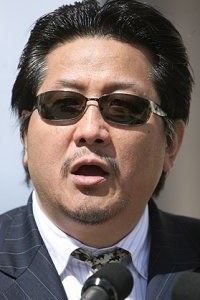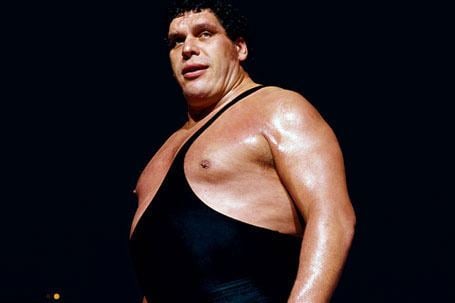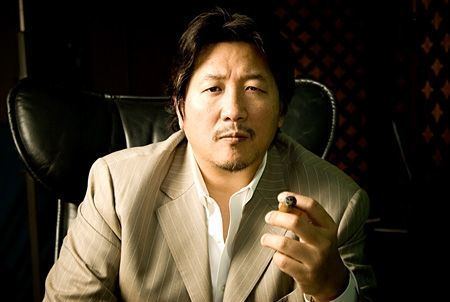Billed height 1.91 m (6 ft 3 in) Height 1.91 m Billed weight 102 kg (225 lb) Weight 102 kg | Name Akira Maeda Retired February 21, 1999 Role Professional wrestler | |
 | ||
Ring name(s) Kwik-kik-LeeAkira Maeda Debut August 25, 1978 (vs Kotetsu Yamamoto) Similar People | ||
Giant haystacks vs kwik kick lee akira maeda wrestling
Akira Maeda (前田 日明, Maeda Akira) (born Go Il-myeong (Hangul: 고일명, Hanja: 高日明) or January 24, 1959), is a Japanese mixed martial artist and retired professional wrestler of Korean descent. Maeda was also known by the ring name Kwik-kik-Lee during his time on the British wrestling show World of Sport. Maeda helped develop the shoot-style of professional wrestling during the late 1980s.
Contents
- Giant haystacks vs kwik kick lee akira maeda wrestling
- Dutch mantell vs akira maeda uwf april 11th 1984
- New Japan Pro Wrestling 19781984
- Universal Wrestling Federation 19841985
- New Japan Pro Wrestling 19851988
- Newborn UWF 19881990
- Fighting Network RINGS 19912002
- Revived Rings 2008present
- Personal life
- In wrestling
- Championships and accomplishments
- References

Dutch mantell vs akira maeda uwf april 11th 1984
New Japan Pro Wrestling (1978–1984)

Maeda entered the New Japan Pro Wrestling (NJPW) dojo in 1978 and debuted the same year. Like many other New Japan stars before and after him, Maeda embarked on a foreign tour to the United Kingdom, where he adopted the Kwik-kik-Lee moniker. In 1983, he participated in the first International Wrestling Grand Prix tournament, won by Hulk Hogan. He was one of three Japanese entrants to the international tournament, alongside Antonio Inoki and Rusher Kimura.
Universal Wrestling Federation (1984–1985)

In 1984, Maeda, Yoshiaki Fujiwara, and other New Japan defectors formed the Japanese UWF. It was during his time in the first incarnation of the UWF that his willingness to show his displeasure in the ring became known; he quarreled with Satoru Sayama (the original Tiger Mask) over the direction of the UWF, as Maeda wanted the promotion to feature wrestling and grappling holds, while Sayama (a kickboxer before he went into wrestling) favored kicks. Some in the UWF were also reportedly resentful of Sayama's booking himself to win all his matches, where others, Maeda included, "jobbed" in the worked matches. The promotion folded a year later, and Maeda returned to New Japan, where he became one of the promotion's biggest stars.
New Japan Pro Wrestling (1985–1988)

Maeda became involved in a real-life feud with New Japan booker and top star, Antonio Inoki, refusing to work with him in what could have been a huge moneymaking program. In April 1986, he was involved in one of the most surreal moments in wrestling history during a match with André the Giant; neither man could agree to losing the match. Andre appeared drunk and started no selling Maeda's moves. Then Maeda proceeded to shoot kick André's legs and repeatedly take him down. After 30 minutes of this, André voluntarily laid down to be pinned (in spite of being assured that Maeda would lose the match), but Akira refused to do so. Inoki eventually came to the ring and demanded the match to end, much to the bewilderment of the audience. On November 19, 1987, during a six-man tag team match, as Riki Choshu was putting his opponent, Osamu Kido, in a Sasori-gatame, Maeda delivered a legitimate kick to Choshu's face, breaking his orbital bone. The resulting injury would sideline Choshu for well over a month, and Maeda was immediately suspended for his actions. In February 1988, the final straw came when Maeda was fired by New Japan for refusing to go on a training excursion to Mexico.
Newborn UWF (1988–1990)
In 1988, Maeda formed Newborn UWF with Nobuhiko Takada and others, this time as its number one star, using the notoriety he gained in New Japan to draw large crowds. Maeda's UWF became the first promotion to hold a show at the Tokyo Dome, drawing 60,000 to watch Maeda defeat Willy Wilhelm in the main event. In December 1990, Newborn UWF dissolved due to disagreements over the direction of the company.
Fighting Network RINGS (1991–2002)
Maeda would go on to form Fighting Network RINGS in 1991, while Nobuhiko Takada formed Union of Wrestling Force International with most of the Newborn UWF roster. Fighting Network RINGS would no longer bill itself as wrestling in 1997, after the collapse of UWF International. In 1999 he retired from active competition after being defeated in a match against three-time Olympic Gold medalist Alexander Karelin, drawing an incredible gate of $2.5 million. The match gained widespread media coverage, including mentions in the New York Times and Sports Illustrated.
Following Maeda's retirement, he switched his promotion's style from shoot-style to competitive mixed martial arts fighting. The new Rings held two King of Kings tournaments, which introduced such mixed martial artists as Fedor Emelianenko, Dan Henderson, Randy Couture, Jeremy Horn and Antônio Rodrigo Nogueira to the Japanese audience. RINGS folded in 2002, due to the growing popularity of PRIDE.
Revived Rings (2008–present)
When K-1 wanted to start a new MMA brand after their previous attempt with K-1 Romanex, Fighting and Entertainment Group hired Maeda as a consultant for Hero's. However, FEG retired Hero's in February 2008 to team up with former PRIDE staff to create DREAM. Maeda's new project was called The Outsider, an amateur MMA series that uses Hero's rules. RINGS brand was revived for The Outsider series and several events have been held since March 30, 2008.
On January 22, 2012, Maeda decisively resurrected the Fighting Network RINGS brand with Battle Genesis: Vol. 9, the continuation of the Battle Genesis series the last event of which was held on September 20, 2001. The event was sanctioned by ZST.
Personal life
Maeda's interest in martial arts developed as a schoolboy while watching the Ultraman television series. By the time he was in high school, his only interests were motorcycles and karate.
Maeda was a third-generation Zainichi Korean prior to naturalization.
